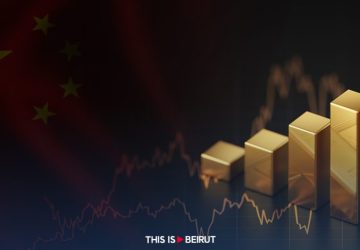Listen to the article
The fundamental principle of asset diversification remains unshakable despite the speculative fever surrounding a short-term surge in gold prices, with experts predicting a peak of $2,800 per ounce by the end of 2024.
Lebanese investors have turned to gold since the onset of the multidimensional crisis in October 2019, even though the yellow metal does not offer immediate returns and lacks short-term capital appreciation.
In 2024, amidst hyperinflation and diminishing interest in real estate, many Lebanese are keen to acquire gold coins, bars, or jewelry. They rightly perceive gold as a dependable refuge in times of crisis, with few viable other alternatives.
The Gold and the Lebanese
Lebanon’s gold bar imports have seen a steady rise since October 2019, climbing from $476 million to $1.13 billion in the first eight months of 2023, according to data from the research bureau “Information International.”
As for exports, gold bar figures have shown a consistent decline since October 2019, dropping from $1.132 billion to approximately $122 million in the first eight months of 2023.
Gold Price Correction
Since the year’s outset, the price of gold has surged by over 13%, reaching a historic high of $2,431.52 on April 12th, driven by expectations of US interest rate cuts that diminish the dollar’s appeal. It then retreated in late April, hovering around $2,225 per ounce.
Despite this correction, the price remains significantly high compared to the early 2024 level and the 2022 price of around $1,880 per ounce.
Rising Gold Prices
Gold prices fluctuate in commodity markets, carrying inherent risks despite being viewed as a hedge against risk. Nevertheless, gold has not historically deceived long-term holders.
In this context, many experts assert that there’s never an inappropriate time to buy gold. This implies that gold purchases are suitable regardless of circumstances, provided the intention is to save rather than invest.
Conjunctural Hazards
Heightened geopolitical tensions, such as the Ukraine conflict and strife between Israel and Hamas, bolster demand for gold as a listed asset, owing to its traditional safe-haven status.
The global trend among central banks to diversify assets in order to reduce reliance on the US dollar further boosts global demand. Central bank gold purchases totaled 289.7 tons in the first three months of 2024.
In 2023, the Chinese central bank acquired 225 tons of gold, according to the World Gold Council. In March, China’s gold reserves grew by 5 tons, reaching a total of 2,262 tons.
A reputable economist, speaking anonymously to “Insider,” suggested that gold prices could rise by 29% if the Chinese central bank continues its purchases.
Additionally, gold demand in the technology sector, where it features in various electronic components, rose by 10% in the first quarter of 2024 compared to the same period last year, reaching 78.6 tons.
In a note dated April 15th, despite the gold rush and fervent buying, Georgette Boele, an economist at Dutch bank ABN AMRO, cautioned against over-reliance on this commodity amid record prices.




